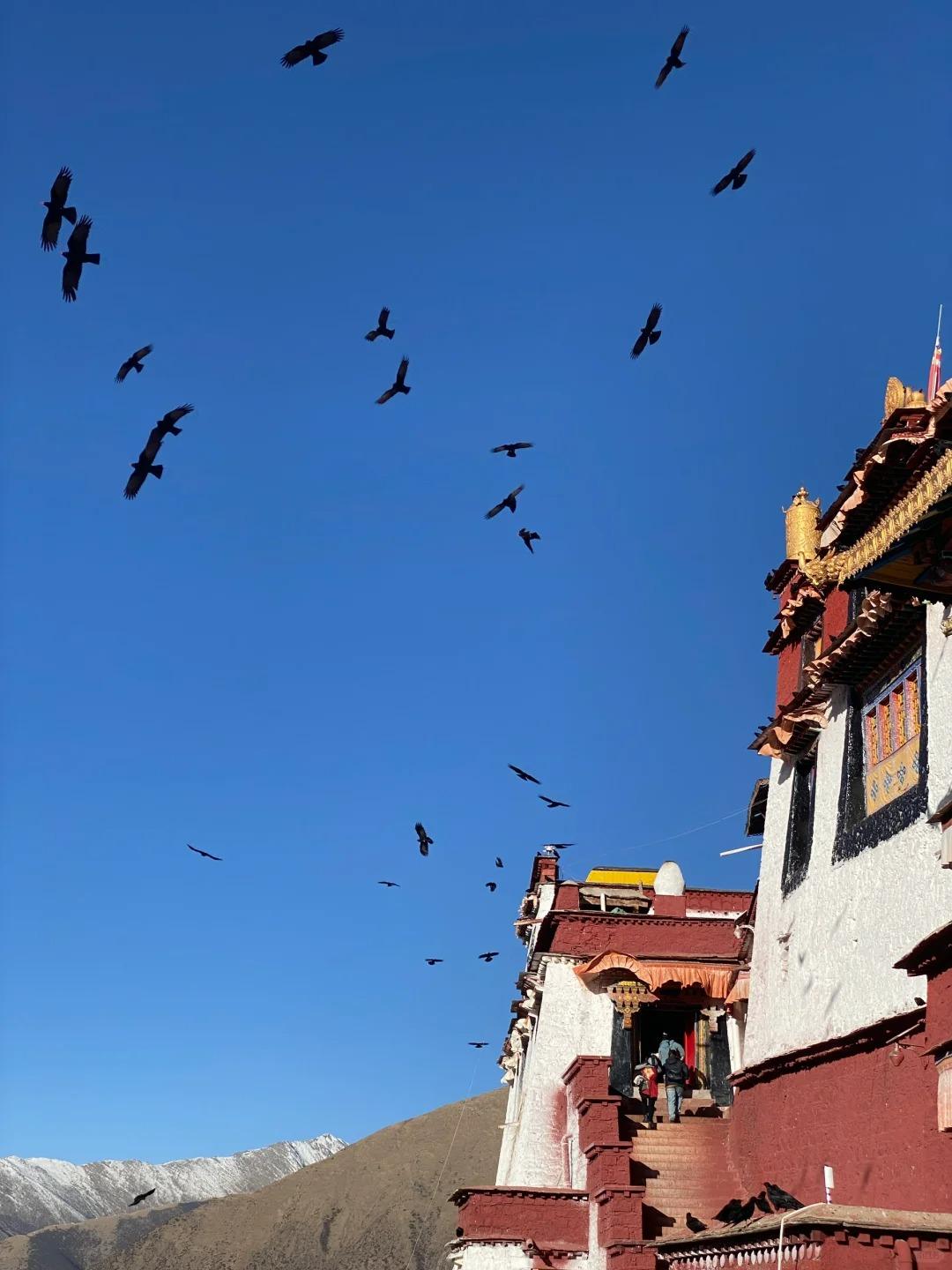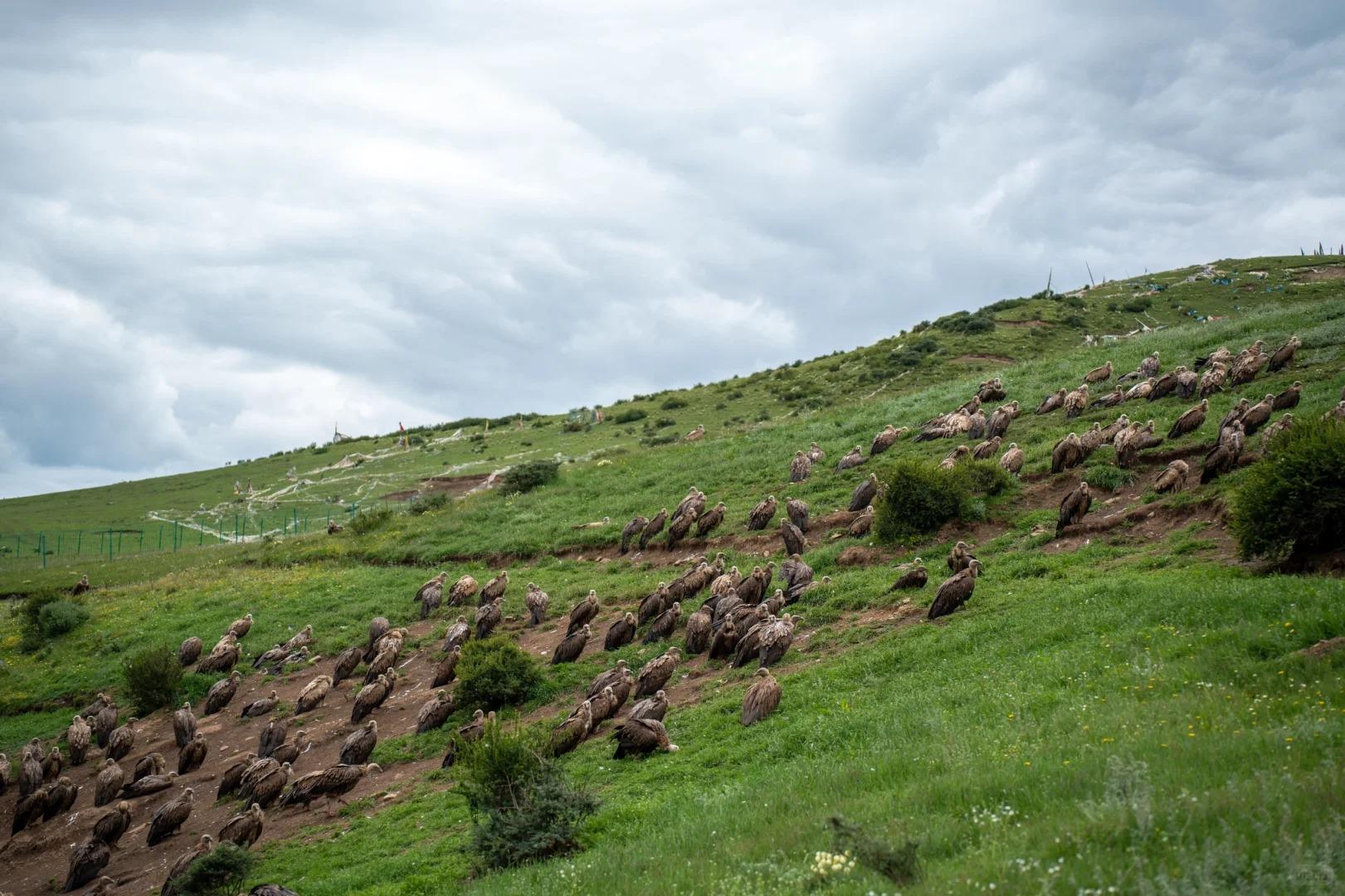Introduction to Tibetan Sky Burial
Tibetan sky burial, known as “jhator” in Tibetan, is a funeral practice that involves offering the deceased’s body to vultures and other birds of prey. This unique custom is deeply rooted in Tibetan Buddhist beliefs and the harsh realities of Tibet’s geography.
Key aspects of sky burial include:
- Returning the body to nature
- Demonstrating the impermanence of life
- Practicing generosity by feeding wildlife
Primarily practiced in Tibet and some surrounding Himalayan regions, sky burial reflects the profound connection between Tibetan culture, spirituality, and the natural world.

Historical Background
The origins of sky burial can be traced back to pre-Buddhist times in Tibet. As Buddhism spread across the Tibetan plateau, it incorporated elements of local customs, including this funeral practice.
Over centuries, sky burial evolved to align with Buddhist principles:
- Emphasizing the transient nature of physical existence
- Encouraging detachment from the body
- Providing a final act of compassion by feeding animals
This practice has persisted due to its spiritual significance and practical necessity in Tibet’s rocky, often frozen landscape where traditional burial or cremation can be challenging.

The Ritual Process
The sky burial ritual is a carefully orchestrated process:
| Stage | Description |
|---|---|
| Preparation | Body is cleaned and wrapped; prayers are recited |
| Transportation | Body is taken to the burial site, often on a mountaintop |
| Dismemberment | Rogyapa expertly cuts the body into small pieces |
| Offering | Flesh is left for vultures and other birds to consume |
| Conclusion | Bones are ground and mixed with barley flour for birds |
The rogyapa, or “body-breaker,” plays a crucial role in this process. Skilled and respected, they ensure the body is properly prepared for the vultures.
Throughout the ceremony, monks may chant prayers, and family members often remain nearby, though typically out of direct sight of the proceedings.
Spiritual Significance
In Tibetan Buddhism, sky burial embodies several key concepts:
- Impermanence: The rapid disappearance of the body illustrates life’s fleeting nature
- Rebirth: The body nourishing other creatures symbolizes the cycle of life
- Non-attachment: Willingly offering the body demonstrates detachment from physical form
Compared to other Tibetan funeral practices like cremation or water burial, sky burial is often considered the most meritorious, believed to accumulate good karma for the deceased.

Environmental and Practical Considerations
Sky burial is inherently eco-friendly, leaving no lasting impact on the environment. It supports local ecosystems by providing food for endangered vulture populations.
However, modern challenges include:
- Urbanization reducing suitable burial sites
- Health regulations in some areas restricting the practice
- Declining vulture populations due to environmental factors
When sky burial isn’t possible, Tibetans may opt for cremation or other burial methods, adapting their practices to changing circumstances while maintaining the core spiritual principles.
Cultural Sensitivity and Tourism
The increased global interest in sky burial has raised ethical concerns:
- Many Tibetans view outsider presence as disrespectful to the deceased
- Photography is strictly prohibited and considered highly offensive
- Some sites have been commercialized, leading to cultural degradation
Travelers interested in learning about this practice should:
- Attend educational talks or visit museums instead of actual sites
- Read accounts written by Tibetan authors or scholars
- Respect local customs and refrain from seeking out burial grounds
Government regulations now limit access to sky burial sites, aiming to preserve the dignity and sanctity of the ritual.

Contemporary Issues and Preservation
As Tibet modernizes, sky burial faces new challenges:
- Younger generations may opt for contemporary funeral practices
- Urbanization makes traditional sites less accessible
- Media portrayals sometimes sensationalize or misrepresent the practice
However, efforts to preserve this tradition continue:
- Educational programs highlight its cultural importance
- Some regions are designating protected areas for sky burials
- Tibetan leaders emphasize its spiritual significance to new generations
The future of sky burial in Tibet remains uncertain, balancing between preserving tradition and adapting to modern realities. Its continuation will depend on the Tibetan people’s ability to maintain their cultural practices in a changing world.
Tibetan sky burial offers a profound perspective on life, death, and the interconnectedness of all beings. While it may seem alien to outsiders, it represents a deeply spiritual and ecologically harmonious approach to death. Understanding and respecting this practice provides valuable insights into Tibetan culture and challenges our own perceptions of life’s final journey.






